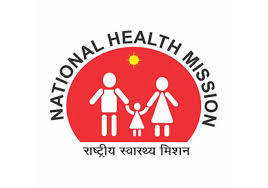The state of Jammu and Kashmir has witnessed a staggering 9,070 fatalities due to road traffic accidents from 2013 to 2022, according to recent government data. This alarming statistic underscores the urgent need for enhanced road safety measures and public awareness campaigns to prevent further tragedies on the region’s roads.
Age Demographics of Road Traffic Fatalities
The data reveals that the most affected demographic is individuals aged 25 to 60 years, accounting for 3,290 deaths. The statistics further break down as follows:
- Under 18 years: 784 fatalities
- Aged 18-25 years: 1,668 fatalities
- 60 years and above: 568 fatalities
In addition to the fatalities, a staggering 28,230 individuals have suffered grievous injuries over the same period, highlighting the severe impact of road accidents on families and communities across the region.
Government Initiatives for Road Safety
In response to this crisis, authorities in Jammu and Kashmir are implementing various measures to enhance road safety. The Motor Vehicles (Amendment) Act, 2019, mandates electronic monitoring and enforcement of road safety regulations across National Highways, State Highways, urban roads, and cities with significant populations.
Key Measures Include:
- Electronic Monitoring: Introduced in August 2021, new rules focus on high-risk corridors on National Highways and critical junctions in cities with populations exceeding one million.
- Advanced Traffic Management Systems (ATMS): For new highway projects on high-density corridors, ATMS installations are included as part of the project plan. Existing major corridors are also being equipped with these systems as standalone projects.
- Public Awareness Campaigns: The Ministry of Road Transport and Highways conducts advocacy campaigns and promotes road safety through social media initiatives and the annual National Road Safety Month.
- Incorporation of Road Safety Education: Collaborating with the Ministry of Education, road safety education is being integrated into school curricula through NCERT textbooks.
The Need for Continued Vigilance
Despite these initiatives, the high number of fatalities indicates that more needs to be done. Authorities must continue to monitor road conditions and enforce traffic regulations rigorously. Public engagement is critical; drivers must be educated about safe driving practices and the importance of adhering to traffic laws.
Recommendations for Improvement:
- Enhanced Infrastructure: Investment in better road infrastructure can significantly reduce accidents. This includes proper signage, well-maintained roads, and pedestrian crossings.
- Increased Enforcement: Regular checks by traffic police can deter reckless driving behaviors such as speeding or driving under the influence.
- Community Engagement: Local communities should be involved in road safety initiatives to raise awareness about safe driving practices among residents.
Conclusion
The tragic loss of life due to road traffic accidents in Jammu and Kashmir serves as a stark reminder of the ongoing challenges faced in ensuring road safety. With a concerted effort from government authorities, communities, and individuals alike, it is possible to reduce these numbers significantly. By prioritizing safety measures and fostering a culture of responsible driving, Jammu and Kashmir can work towards making its roads safer for all users.







